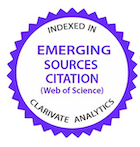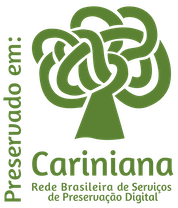Qualidade microbiológica de produtos de origem animal encaminhados para alimentação escolar
DOI:
https://doi.org/10.1590/1089-6891v20e-43226Resumo
Doenças Transmitidas por Alimentos (DTA) estão associadas ao consumo de alimentos e água contaminados por microrganismos patogênicos, sendo alguns desses grupos utilizados como indicadores dos cuidados higiênico-sanitários e empregados nos produtos de origem animal (POA). O objetivo foi avaliar a qualidade higiênico-sanitária dos POA encaminhados para alimentação escolar no município de Pelotas, Rio Grande do Sul, Brasil. As coletas foram realizadas no posto de distribuição da Secretaria de Educação. Foram coletadas cinco amostras de todos os lotes de leite UHT, bebida láctea e filés de frango que deram entrada no período de onze meses, totalizando cinquenta e cinco amostras. Os produtos foram avaliados quanto aos padrões microbiológicos da Agência Nacional de Vigilância Sanitária (ANVISA). Além dessas análises foram realizadas pesquisa da presença de Campylobacter e de Salmonella nos produtos de frango. Foi aplicada uma lista de verificação das boas práticas de armazenamento. Todas as amostras estavam dentro dos padrões microbiológicos admitidos pela ANVISA, entretanto Salmonella foi detectada em quatro amostras de filés de frango. Campylobacter não foi isolado de nenhuma amostra. As condições de armazenamento foram consideradas ruins, apresentando 72,4% de não conformidades, especialmente nos quesitos temperatura e condições de armazenamento. A presença de Salmonella pode oferecer risco à saúde das crianças que venham a consumir filé de frango.
Palavras-chave: Saúde infantil, Saúde pública, Salmonella, Doenças transmitidas por alimentos.
Downloads
Publicado
Como Citar
Edição
Seção
Licença
Copyright (c) 2019 Ciência Animal Brasileira

Este trabalho está licenciado sob uma licença Creative Commons Attribution 4.0 International License.
Autores que publicam nesta revista concordam com os seguintes termos:
- Autores mantém os direitos autorais e concedem à revista o direito de primeira publicação, com o trabalho simultaneamente licenciado sob a Licença Creative Commons Attribution que permite o compartilhamento do trabalho com reconhecimento da autoria e publicação inicial nesta revista.
- Autores têm autorização para assumir contratos adicionais separadamente, para distribuição não-exclusiva da versão do trabalho publicada nesta revista (ex.: publicar em repositório institucional ou como capítulo de livro), com reconhecimento de autoria e publicação inicial nesta revista.
- Autores têm permissão e são estimulados a publicar e distribuir seu trabalho online (ex.: em repositórios institucionais ou na sua página pessoal) a qualquer ponto antes ou durante o processo editorial, já que isso pode gerar alterações produtivas, bem como aumentar o impacto e a citação do trabalho publicado (Veja O Efeito do Acesso Livre).






























